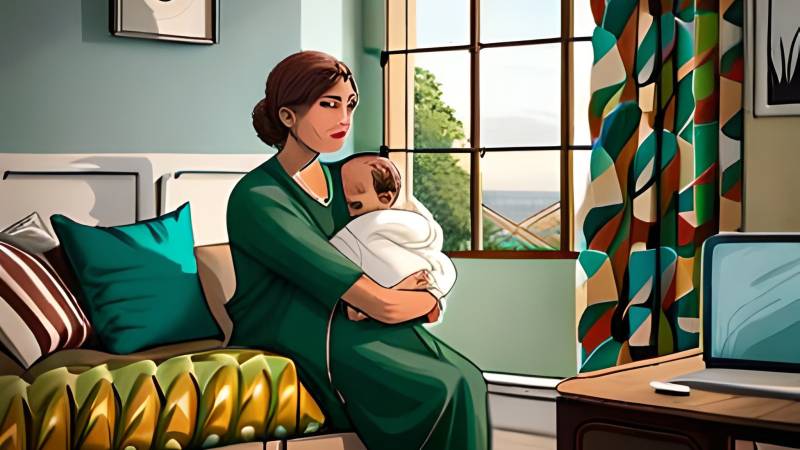
At a time when Pakistan faces a shortfall of thousands of doctors to cater to its fast-swelling population, a large segment of qualified doctors are sitting outside its medical setup to practice medicine even when the government spends substantial public funds to subsidise medical education for doctors. A sizeable chunk, nearly equal to the first in absolute terms, has opted to leave the country in search of more rewarding opportunities since the 1970s.
A survey, jointly conducted by Gallup Pakistan and think tank PRIDE, across the country has found that around 35% of female medical doctors are unemployed in Pakistan.
The survey focused on female medical graduates, including those who had passed MBBS, BDS, MS/MSc., M.Phil. or PhD degrees in any field of medicine. The survey collected data from around 99,900 households across Pakistan and gave district-level representative results. Apart from their survey, Gallup Pakistan and PRIDE based their research on the Pakistan Bureau of Statistics (PBS) Labour Force Survey 2020-21. They analysed the data gathered by the PBS on Pakistan's labour market, specifically female medical graduates.
The survey shows that at the moment, there are 104,974 female medical graduates currently in Pakistan. Of these, 68,209 or 65% work at private and state-owned medical facilities. The remaining 36,765 female doctors are not engaged in any medicine-related activity.
Of these, 15,619, or 14.9% of all trained female doctors, do not have a medical job, while 21,146, constituting around 20.1% of the total, are completely out of the labour force, the survey shows.
According to the Pakistan Medical and Dental Council (PMDC), since its inception in 1947, Pakistan has produced about 200,000 doctors, with around half of them women. According the the World Health Organisation (WHO), the minimum ratio should be one physician per thousand patients, with an overall ratio of doctors, nurses and midwives at 44.5 per 10,000 people. At the moment, Pakistan has a ratio of 1.1.
Data from the Bureau of Emigration shows that around 30,000 doctors who graduated in Pakistan have left the country since 1970. On average, almost 1,000 doctors are leaving Pakistan to settle abroad every year.
"Pakistan has a dearth of trained medical doctors," said Gallup Pakistan Executive Director Bilal Gilani.
"Among women, a major issue is that qualified female doctors are not working," he added.
With a significant chunk of doctors receiving training from government-run medical training institutions, there is a probability that many female doctors who are not engaged in the medical field currently may have studied in public sector universities where hundreds of millions in taxpayer money is used to subsidise medical education.
On average, private universities charge medical students over Rs5 million for the full basic degree course. Medical degrees of the same duration at government-run institutions can cost less than Rs1 million, with the government providing a subsidy of around Rs4 million per student to produce a medical doctor.
But when doctors produced through such education fail to enter the field- particularly when one in three female doctors do not join the field- and serve the public, the taxpayers' money goes to waste.
The analysis report claimed that the state had lost around Rs200 billion in investment on the 35,000 female doctors who completed their training but then decided against entering the field.
"We need to rethink the costs to taxpayers of these not working doctors but also the loss in terms of health outcomes which their absence is causing," observed Gilani.
Dr Shahid Naeem, the director for Policy Research at PRIDE, said that according to the data, one in every five medical graduates opt to remain out of the labour force.
A majority of these 'out of labour force' individuals are female medical graduates, and he said many reasons include marriage.
"This is indicative of the presence of a social trend of getting medical education in order to secure a better spouse," Dr Naeem said. He said the government must review its policies to ensure a more effective use of public money at medical colleges.
He said that the issue of female medical graduates or doctors who remain out of the labour force after completing arduous medical education is a serious concern that warrants further exploration.
The findings of this survey support the phenomenon of 'doctor brides' as widely discussed and reported in Pakistan's context and stipulate that many families view that if their daughters have a medical education, it enables them to find a more suitable marriage match.
The rural-urban gap
Even though a majority of the country's population, around 61%, continues to live in rural areas, the survey found that about 28% of Pakistan's total medical graduates live in rural areas, as opposed to 72% in urban areas.
Further, it found that the rural out-of-labour force percentage was 17% -- compared to the national average of 20%.
An analysis of the data from urban centres shows that around 70% of medical graduates were employed, while less than 9% were unemployed.
The proportion of medical graduates who remain out of the labour force in Pakistan's urban areas is more than 21%.
A region-wise comparison shows that employment opportunities for female graduates are significantly higher, 78%, in urban areas as compared to 22% in rural areas.
Consequently, the survey shows that the proportion of jobless is significantly higher in rural areas, 57%, compared to 43% in cities.
A region-wise breakup of the 21,146 female medical graduates who opted to remain out of the labour force shows that their share in cities stands much higher, at 76.6%, compared to 23.4% in rural areas.
It is pertinent to mention that around 76% of those medical graduates who opted to remain out of the labour force were married. By age group, the most frequent occurrence of female medical graduates who married (54%) are from the 25-34 years age group.
"The analysis of the data underlines the importance of targeted policy efforts to improve employment opportunities for medical graduates, especially in rural areas where unemployment rates are higher," concluded the survey.

